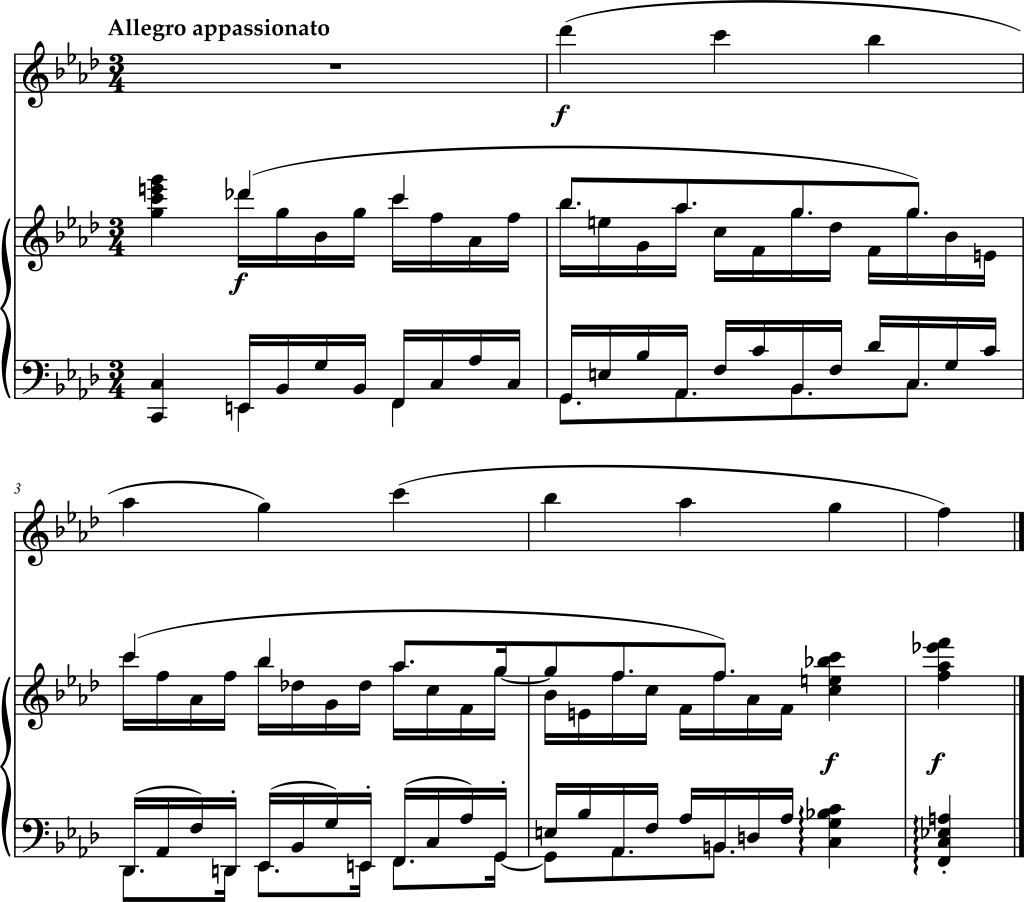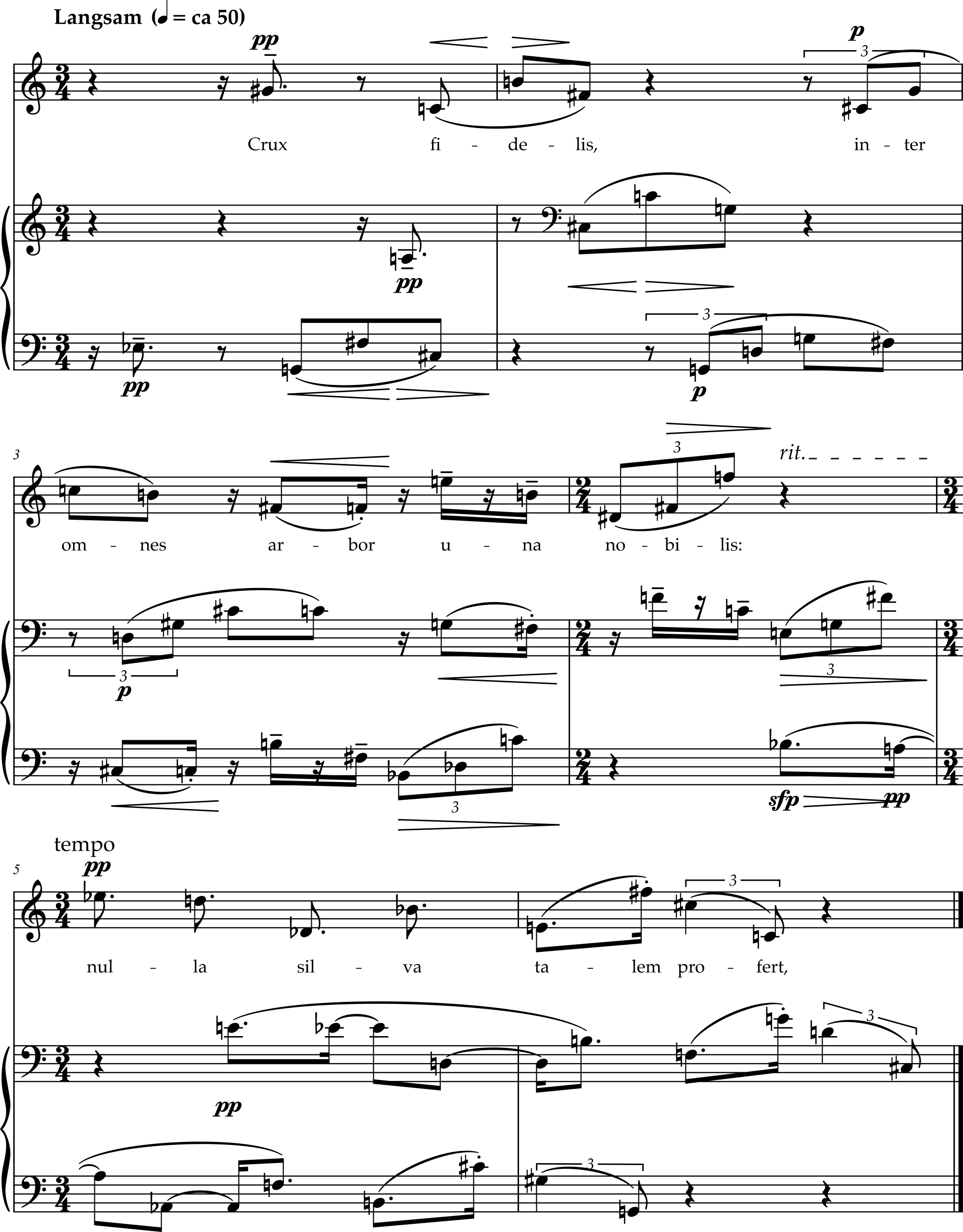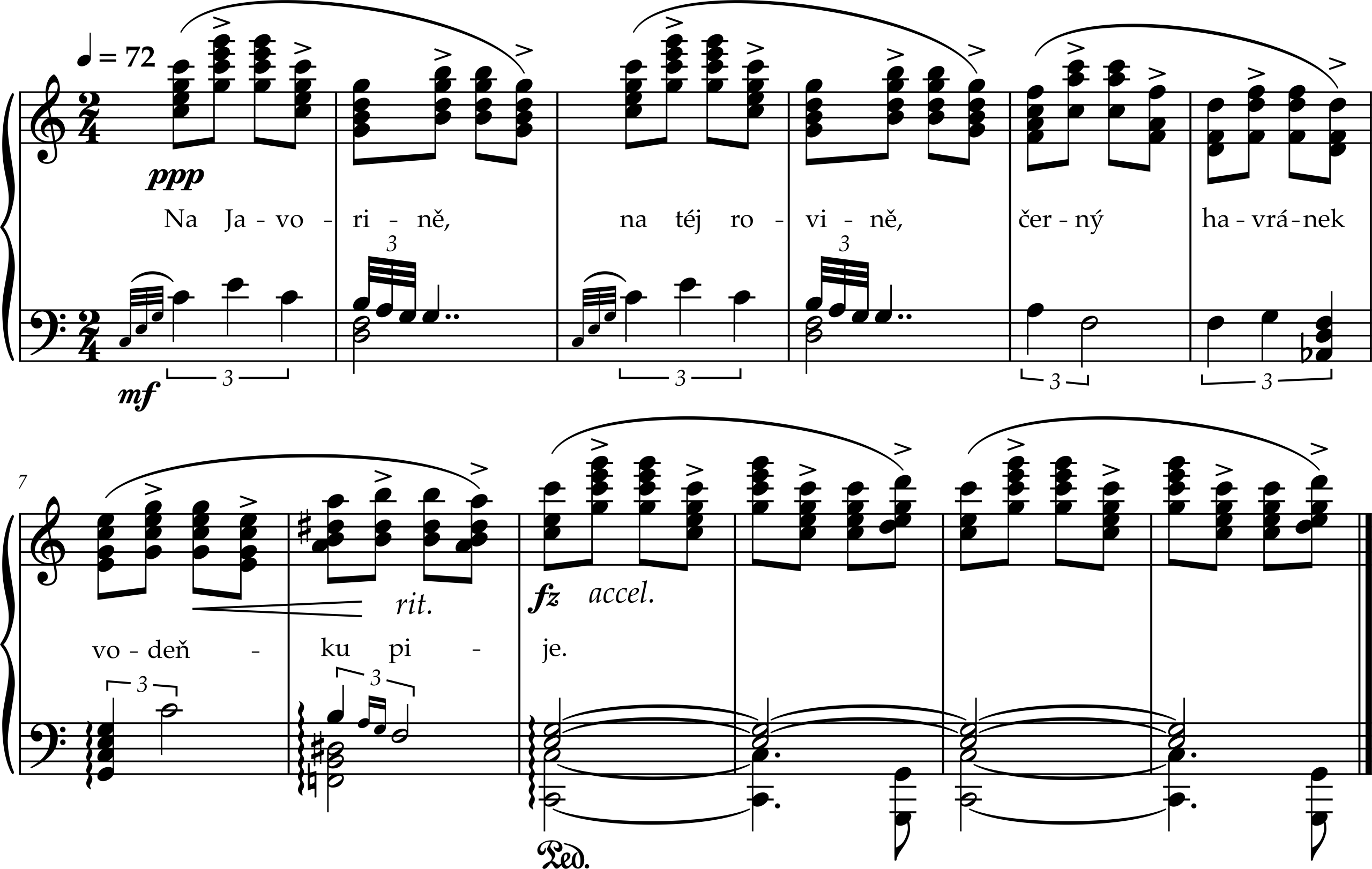C. Large-Value Quadruplets and Four-Against-Three
A Guided Example
While we separate beat-level quadruplets from beat-level four-against-three into distinct chapters, we do not separate large-value quadruplets and large-value four-against-three in this way. We feel that accurate performance of large-value quadruplets, even single-line, requires the skill associated with accurate performance of large-value four-against-three. Again, that skill is different from the skill of performing beat-level quadruplets and four-against-three.
For those familiar with mnemonic devices for performing four-against-three, it is important to note that those are only of benefit to the performance of large-value four-against-three. While such devices can be useful as a checkin-in for rhythmic accuracy, we feel they are overused when teaching the topic and do not effectively capture the underlying skill.
Exercise 8C-1 helps visualize this skill. In the second measure of the piano part, the outer melodic and bass voices of the piano part regroup sixteenths from sets of four to sets of three. The result is a large-value quadruplet that spans the full 3/4 measure. The clarinet sustains quarter notes against this regrouping, producing a large-value four-against-three. We recommend practicing the piano part multiple times in isolation and then layering on the clarinet part.
Once this exercise has been mastered, modify it by omitting the sixteenths but continuing to imagine them as present. This is the basic skill for effective performance of large-value quadruplets: mentally regrouping a four-way subdivision of the beat into groups of three.
Note that the notation of large-value quadruplets with dotted-eighth notes is common and appears in Exercise 8C-2 as well.
Exercise 8C-1: Johannes Brahms, Sonata Number 1 for Clarinet (or Viola) and Piano, Opus 120, Movement 1

Example for Application
Once Exercise 8C-1 is mastered, move to Exercise 8C-2. Again, imagine the sixteenth-note subdivision during passages of dotted-eighth quadruplets. This exercise is a canon and is best performed as a trio.
Exercise 8C-2: Anton Webern, Five Canons, Opus 16, Number 3

Large-Value Four-Against-Three with Large-Value Triplets
One additional way large-value four-against-three occurs is through subdivision of a large-value three-against-two. In Exercise 8C-3, that three-against-two is in the form of quarter notes against triplet quarter notes. The quarter notes are then subdivided into eighth notes to produce a large-value four-against-three. In this case, the underlying skill is the one associated with beat-level four-against-three and not with large-value quadruplets. Begin by sustaining a large-value 3:2 and then subdividing the 2 into 4.
Exercise 8C-3: Leoš Janáček, Fifteen Moravian Folks Songs, Number 14


